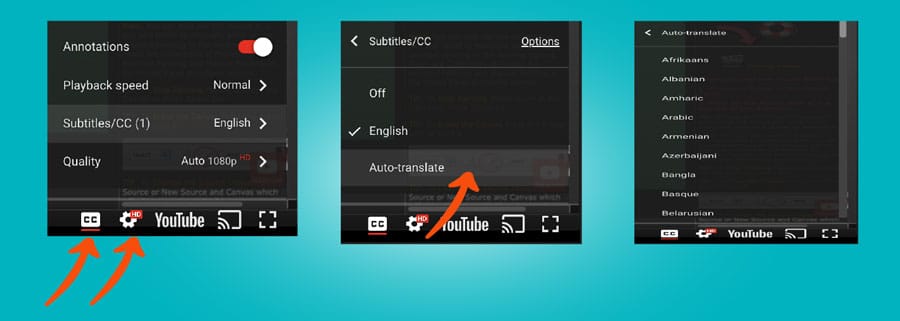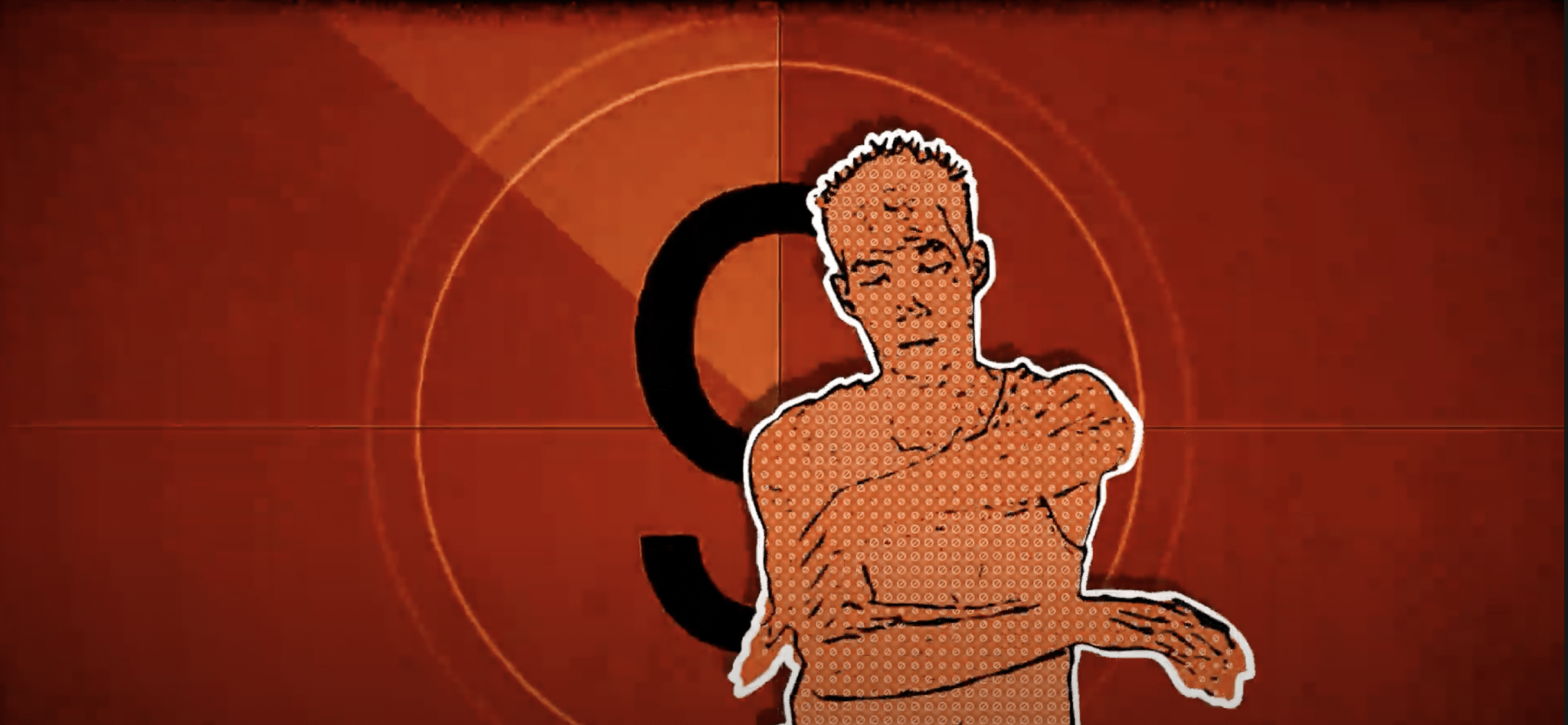Subscribe to Studio Artist's Youtube Channel
Getting Started
Basic Concepts of Studio Artist
- How to use Dark Mode with Mac
4:47
Using your own Source Images and Exporting EPS and SVG Images
This video will explain the basic concepts of Studio Artist, how to load your own images and videos into the source area, how to change the canvas size and how to export resolution independent .eps and .svg files from the Vectorizer.
6:05
The Paint Synthesizer, Vectorizer and Image Operation Modes
The Paint Synthesizer creates AI automatic, assisted and manual painting and drawing.
The Vectorizer takes photos or videos and automatically turns them into stylized vector art.
The Image Operations Mode is the equivalent of 75 photoshop plugins many of them unique to Studio Artist.
6:11
Automatic Rotoscoping, Animation and Video Effects
This Video will explain how Paint Action Sequences, are used to turn video into automatic animation and rotoscoping, in Studio Artist.
\It will also show you how to output a rotoscope animation or movie and finally had to do some basic editing. Also it will show you how to edit and save a Paint Action Sequence.
4:51
The Source Area and Colorization Options
The source area is where the Source Image resides in Studio Artist.
You can think of the Source Image as a model, in the same way an artist would view a model.
Besides the Source Image the Source Area manages color and this video explains all the various color options in the the Source Area.
4:07
Preset Management - Everything you need to know about storing, organizing and finding presets
How to save and update your presets to your Studio Artist favorites folder. Also how to search for presets.
4:30
Save Time Rendering by Launching Multiple Versions of Studio Artist on One Computer
This video will explain how you can save a lot of time by running multiple versions of the Studio Artist app on one computer.
This way can render animation or high resolution canvases on one or two versions of the program app while still continuing designing on another.
1:45
Operation Modes - Introduction
The Paint Synthesizer Mode
This Video will show the basics of the Paint Synthesizer’s automatic and assisted Artificially Intelligent painting and drawing presets. Plus it will show you how to create your own Paint Action Sequence preset and how to save it to your Favorites folder. Other videos will get into more depth including the editor.
3:48
The Vectorizer Mode
The vectorizer converts images or video into resolution independent stylized Vector Art that you output as .eps or .svg. This video is a brief introduction into the Vectorizer presets the Vectorizer editor. Like everything in Studio Artist, the vectorizer is preset driven and each preset can be tweaked with the editor. New vector presets can also be made from scratch or Studio Artist can make them for you automatically.
1:48
The Vectorizer Editor – 7:00
The vectorizer converts images or video into resolution independent stylized Vector Art that you output as .eps or .svg. This video will show you how to edit Vectorizer presets.
How to Make a Silhouette with the Vectorizer – 0:44
Image Operations Mode
The Image Operations Mode is a full suite of smart effects with hundreds of editable presets for your photos and videos.
There are over 75 different effects in this mode such as, smart contrast, smart blur, glows, lens effects, coloring, sketch effects, hedcuts, dodge and burn, line screens, smart sharpen and many more.
This video briefly introduces you to the Image Operations Editor.
2:24
MSG Mode - Modular Synthesized Graphics
MSG which stands for Modular Synthesized Graphics, is a computer generative image processor that can be used to automatically create a wide range of abstract imagery and processing effects.
There are several MSG presets that come with Studio Artist but it’s also very easy to create your own presets by using the one-click MSG Evolution Editor. This video shows you how to do that.
2:26
The Dual Paint Mode- Automatic Interactive Animation and Art
Dual Paint presets in Studio Artist can be used to create automatic or interactive still art or automatic abstract animations.
The Dual Paint mode combines automatic paint synthesizer presets with other kinds of modes such as the vectorizer, MSG or image operations, as well as, warp and adjust modes.
2:02
See Interactive Dual Paint Animations – 2:28
How to Stream Interactive Dual Paint to Video – 4:24
Paint Action Sequence Mode (PASeq)
The Paint Action Sequence (PASeq) mode is the default mode in Studio Artist.
This video shows you have to playback a PASeq to preview the factory presets which will show you the kinds of art and video that Studio Artist can automatically generate.
2:28
The Adjust Mode - Quick Interactive Edits - Sharpening - Lumination - Hue - Thresholds - Linescreens and more
The adjust modes can interactively change hue, saturation, luminance, etc.
This mode can also create interactive line screens, thresholds, blurs and sharpening on the fly and more.
1:15
Interactive Warp Mode - Warp and Symmetry Effects Twist – Bend – Transform – Blend – Kaleidoscopes
This video will show you how to use the interactive warp and symmetry effects in Studio Artist.
There are 65 effects to choose from.
2:20
Interactive Warp Mode - How to Enlarge Eyes
Quick Video showing how to Interactively enlarge eyes
0:55
The Selection Mode - Interactive selection and masking tools
This video will show you how to use the interactive selection and masking tools
3:55
Animation and Moving Art
Automatic Rotoscoping, Animation and Video Effects
This Video will explain how Paint Action Sequences, are used to turn video into automatic animation and rotoscoping, in Studio Artist.
It will also show you how to output a rotoscope animation or movie and finally had to do some basic editing.
Also it will show you how to edit and save a Paint Action Sequence.
4:51
Streaming Video - How to Record Live and Interactive Screen Actions
This video will show you how to live stream actions in Studio Artist.
You can use it record live interactive computer generated animation or you can use it to record Studio Artist auto painting.
You can also use to output a folder of numbered images and output folders of SVG or EPS files.
4:24
Save Time Rendering by Launching Multiple Versions of Studio Artist on One Computer
This video will explain how you can save a lot of time by running multiple versions of the Studio Artist app on one computer.
This way can render animation or high resolution canvases on one or two versions of the program app while still continuing designing on another.
1:45
How to Combine Two Movies without using Layers Part 1 and 2
Part 1
This video will explain how to create a transparent background in a video and then how to add a background video so both videos play at once.
4:22
Part 2
This video will edit the previous video so that the 2nd video will play inside the first video
5:59
Paint Action Sequence (PASeq)
How to Create A Paint Action Sequence (PASeq)
This video will show you how to make a Paint Action Sequence (PASeq) preset.
A Paint Action Sequence records any steps you make with Studio Artist into a script that you can play back and apply to any source image or video.
A PASeq is also used for automatic rotoscoping with Studio Artist.
3:42
How To Edit a Paint Action Sequence (PASeq)
This video will show you some of the basics of editing a Paint Action Sequence.
The Paint Action Sequence mode is the default mode when you launch Studio Artist.
A Paint Action Sequence can combine presets into a script from all the different image processing modes, such as the Vectorizer and the Paint Synthesizer.
It is also used to created automatic rotoscoping, video effects and automatic animation.
5:39
Transition Effects
How to Create Transitions Between Images
This video will show you how to use the Flow and Fracture auto Transition Effects
8:16
How To Create Transitions with Painted Bezier Paths
This video will show you how to create cool transitions using automated bezier paths. This creates the effect of transitions using brush strokes that autodraw one image, break apart and then morph into the next next image or movie frame.
8:33
Photo Mosaics and Vector Mosaics
Automatic Photo and Vector Mosaics Overview
Making automatic photo mosaics and vector-shaped mosaics is easy in Studio Artist.
There are several styles you can make. From classic photo mosaics, to stylized regionizers, plus mosaics made from text or even a blend of shapes combined with photos and text.
There are hundreds of curated presets to help get you started. You can easily import your own folder of image tiles to be applied to your source images.
2:40
How To Edit Photo Mosaics
This video will show you tighten an automatic Photo Mosaic preset in Studio Artist, how to load your own tiling images, how to add detail and edging in Image operations. There are several styles you can make.
You can easily import your own folder of image tiles to be applied to your source images.
3:43
Colorizing Mosaics and Photo Mosaics
How to colorize your Automatic Photo Mosaics in Studio Artist. You can colorize your mosaics tiles to match your source image or use a palette of colors or choose any number of different the many colorization options in Studio Artist.
This video shows you how you can blend two different colorization modes to create complex coloring.
4:20
Quick Tweak to add Definition to your Photo Mosaics
This video will show you a quick edit that will bring in the source image detail to your photo mosaic
1:04
Changing Tiling Pattern for Mosaics and Photo Mosaics
This video will show you how to change the tiling pattern when making automatic photo mosaics or shape mosaics in Studio Artist.
There are several tiling options and each of those can be edited to create hundreds of difference tiling looks.
2:35
Creating your own Vector Tiles Shapes with Path Shape
This video will show you how to make your own vector shapes for automatic mosaics in Studio Artist.
1:47
Adding Vector Patterns inside your Vector Mosaic Tiles
This video will show you how to add patterns inside your Vector tiles through the Vector Output Panel. It will also show you how to add shadowing and how to change colors.
5:26
Adding Text to Vector Mosaics
This video will show how to add text to automatic vector mosaics in Studio Artist.
4:29
Adding Text to Photo Mosaics
This video will show you how to make your own vector shapes for automatic mosaics in Studio Artist.
1:47
The Paint Synthesizer - Styles
Fun Interactive Spiro Art
This video will show you how to add text on top of your photo mosaics tiles.
3:02
The Paint Synthesizer - Editing
How to Edit a Vector Paint Preset - Vector Output Panel
This video will show you how to edit a Vector Paint preset in the Paint Synthesizer.
How to change the paint type and the colorization and an introduction to the Vector Output Panel.
4:40
Changing Brush Size - Path Length, Width and Shape
How to change the brush size, brush stroke length, and path shape in the Studio Artist Paint Synthesizer.
5:21




